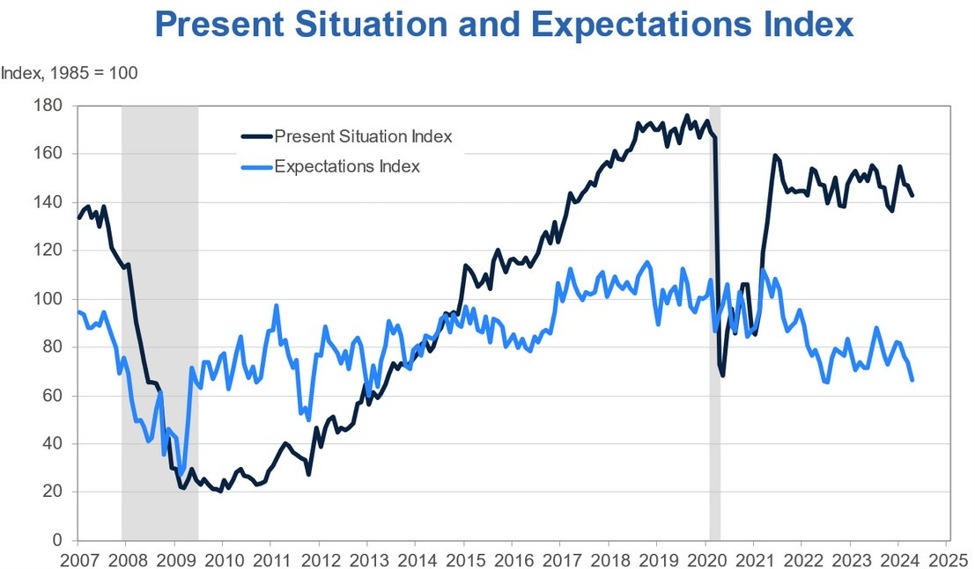DNY59
Parnassus Fixed Income Fund
|
Fund Facts |
Investor Shares |
Institutional Shares |
|
Ticker |
MUTF:PRFIX |
MUTF:PFPLX |
|
Net Expense Ratio1 |
0.58% |
0.39% |
|
Gross Expense Ratio |
0.82% |
0.59% |
|
Inception Date |
08/31/1992 |
04/30/2015 |
|
Benchmark |
Bloomberg U.S. Aggregate Bond Index |
|
|
Asset Class |
U.S. intermediate core-plus bond |
|
|
Objective |
Current income |
|
The strategy pursues an attractive level of current income by owning a core-plus bond portfolio with a significant allocation to green/sustainable bonds that further climate and sustainability goals.
Market Review
Wavering inflation led to a soft first quarter result
The disinflationary trend stalled in the first quarter, while the U.S. economy continued to expand, leading the Federal Open Market Committee to hold target interest rates steady. The delay in potential interest rate cuts pushed bond prices lower as yields rose. Corporate bonds and securitized assets outperformed Treasury bonds as investors took advantage of the delay in rate cuts to lock in yield. Corporate spreads remained tight and high yield bonds rallied as the continued strength of the consumer and labor market curtailed recessionary fears. Meanwhile, higher interest rates weighed on transaction volumes in real estate, with the commercial real estate market in particular facing financing headwinds.
|
Performance |
Annualized Returns (%) |
||||
|
As of 03/31/2024 |
3 Mos. |
1 Yr. |
3 Yr. |
5 Yr. |
10 Yr. |
|
PRFIX – Investor Shares |
-0.43 |
3.51 |
-2.31 |
0.25 |
1.30 |
|
PFPLX – Institutional Shares |
-0.39 |
3.67 |
-2.11 |
0.46 |
1.49 |
|
Bloomberg U.S. Aggregate Bond Index |
-0.78 |
1.70 |
-2.45 |
0.36 |
1.54 |
|
Performance data quoted represent past performance and are no guarantee of future returns. Current performance may be lower or higher than the performance data quoted, and current performance information to the most recent month end is available on the Parnassus website (Parnassus Investments | Responsible Investing Since 1984). Investment return and principal value will fluctuate, so an investor’s shares, when redeemed, may be worth more or less than their original principal cost. Returns shown in the table do not reflect the deduction of taxes a shareholder may pay on fund distributions or redemption of shares. The performance of the Institutional Shares differs from that shown for the Investor Shares to the extent that the classes do not have the same expenses. The Bloomberg U.S. Aggregate Bond Index is an unmanaged index of bonds, and it is not possible to invest directly in an index. Index figures do not take any expenses, fees or taxes into account, but mutual fund returns do. |
|||||
Performance Review
Corporate and government-related bonds aided results
Parnassus Fixed Income Fund (Investor Shares) returned -0.43% for the first-quarter period, outperforming the -0.78% return for the Bloomberg U.S. Aggregate Bond Index. The portfolio maintained a duration that was relatively close to that of the index as interest rates rose.
An overweight to corporate bonds and holdings within the sector aided the Fund’s performance as the sector benefited from a continued strong economy and low corporate default rates. An overweight to government-related bonds also aided relative results, while selection in Treasury bonds detracted.
The portfolio benefited from its overweight allocation to corporate bonds as well as its selections within the asset class. Our corporate bond portfolio outperformed despite a longer-than-benchmark duration (7.3 years versus 7.0 years for the benchmark). A strong economy supported healthy corporate profitability and cash flows and therefore solid returns. High starting yields and tightening credit spreads also aided corporate bond results. Among corporate bonds, finance company bonds performed well on an absolute and relative basis; reaching the interest rate cycle peak has mitigated banking sector risks and recessionary fears. Selection within government-related bonds helped relative performance, boosted by a shorter-than-benchmark duration (2.9 years versus the benchmark’s 5.3 years) amid upward pressure on interest rates. The portfolio’s overweight to the asset class also contributed to performance as the government-related bonds category, while declining on an absolute basis, was the top performer in the Bloomberg U.S. Aggregate Bond Index.
Treasury bonds detracted from the portfolio’s return, although the portfolio’s underweight position in the category helped pare losses, as Treasuries were the worst-performing category in the index. Exposure to securitized bonds, while contributing to relative performance, underperformed other categories as mortgage rates remained elevated and technical and fundamental factors remained volatile in the first quarter.
Portfolio Positioning
Finding return opportunities amid tight spreads
The Fund ended the first quarter with about 60% of assets in corporate bonds, well above the index’s 25%. We continue to believe that corporate bonds provide the best long-term returns as they have higher initial yields. Today, credit spreads are historically tight, meaning that investors see less credit risk due to strong economic growth and lower levels of issuance. While tight spreads mean that there’s less upside to bond prices outside a rally in the Treasury market, we still find today’s overall yields compelling. The Fund is especially overweight bonds issued by companies in the Information Technology, Consumer Discretionary and Consumer Staples categories.
We added several financial issuers to the Fund in the quarter, including securities from ARES Corp, Truist Financial (TFC) and Block (SQ). We believe these securities were undervalued and provide good yield and attractive upside opportunity. One new high-yield issuer was added this quarter – Yum! Brands (YUM), owner of KFC, Pizza Hut and Taco Bell.
In the quarter, we also continued to add to our securitized mortgage exposure. We added about 4% to our securitized mortgages, with a focus on higher-coupon mortgages. These securities are trading at wide spreads relative to Treasuries and provide a nice complement to our corporate bonds. While we are still considerably underweight securitized bonds relative to the index, at 12% versus 28%, we believe this is justified due to the lower yields available on these securities.
Outlook
An uncertain rate path amid stubborn inflation and economic resiliency
The U.S. economy has continued to defy economists’ expectations. So far, growth has remained robust while employment is strong and inflation has retreated, all at interest rates that should have weakened the economy. The Federal Reserve has indicated that it will cut interest rates three times in 2024, and the market is pricing in a similar expectation. The decision to cut interest rates from here depends primarily on the path of inflation, which remains stubbornly higher than the Federal Reserve’s targets. We believe it’s likely that the Federal Reserve will revise its expectations further as 2024 progresses.
A strong economy is positive for corporate bond spreads, as healthy profitability and cash flows support a company’s debt service. However, higher inflation could dampen returns on Treasury bonds, and other asset classes by proxy, if interest rates are pushed higher from here. We believe that longer-term interest rates may rise from here, but most of the increase is behind us. As a result, we expect yields to be the primary driver of bonds’ total return, with changes in interest rates having a smaller overall impact. We maintain our overweight allocation to corporate bonds, as we think that the yield pickup in corporate bonds relative to Treasury bonds still offers compelling total return potential.
|
Sector Weights |
As of 03/31/24 |
|
|
Sector |
% of TNA |
Bloomberg U.S. Agg. |
|
Corporate |
59.8 |
25.1 |
|
Government Related |
8.3 |
4.9 |
|
Securitized |
12.0 |
28.2 |
|
Treasury |
18.5 |
41.8 |
|
Cash and Other |
1.4 |
0.0 |
|
Largest Corporate Holdings |
As of 03/31/24 |
|
Security |
% of TNA |
|
Morgan Stanley (MS) |
1.6% |
|
Sysco Corp. (SYY) |
1.4% |
|
Bank of America Corp. (BAC) |
1.3% |
|
Oracle Corp. (ORCL) |
1.3% |
|
Public Service Co. of Oklahoma |
1.3% |
|
Canadian Pacific Kansas City Ltd. (CP) |
1.3% |
|
Alexandria Real Estate Equities Inc. (ARE) |
1.3% |
|
McCormick & Co. Inc. (MKC) |
1.3% |
|
Global Payments Inc. (GPN) |
1.3% |
|
C.H. Robinson Worldwide Inc. (CHRW) |
1.2% |
|
Holdings are subject to change. |
Samantha Palm, Portfolio Manager, Senior Analyst
Minh Bui, Portfolio Manager, Senior Analyst
|
Glossary Duration is expressed as a number of years. Rising interest rates mean falling bond prices, while declining interest rates mean rising bond prices. The 30-Day SEC Yield is computed under an SEC standardized formula based on net income earned over the past 30 days. It is a “subsidized” yield, which means it includes contractual expense reimbursements and it would be lower without those reimbursements. The Unsubsidized 30-Day SEC Yield is computed under an SEC standardized formula based on net income earned over the past 30 days. It excludes contractual expense reimbursements, resulting in a lower yield. Important Information PIL-533917-2024-04-23 As described in the Fund’s current prospectus dated May 1, 2023, Parnassus Investments has contractually agreed to waive 0.10% of its management fee and to reimburse the Fund for expenses to the extent necessary to limit total annual fund operating expenses to 0.58% of net assets for the Parnassus Fixed Income Fund (Investor Shares) and 0.39% of net assets for the Parnassus Fixed Income Fund (Institutional Shares). This agreement will not be terminated prior to May 1, 2024, and may be continued indefinitely by the investment adviser on a year-to-year basis. The net expense ratio is what investors pay. ENVIRONMENTAL, SOCIAL AND GOVERNANCE (‘ESG’) GUIDELINES: The Fund evaluates financially material ESG factors as part of the investment decision-making process, considering a range of impacts they may have on future revenues, expenses, assets, liabilities and overall risk. The Fund also utilizes active ownership to encourage more sustainable business policies and practices and greater ESG transparency. Active ownership strategies include proxy voting, dialogue with company management and sponsorship of shareholder resolutions, and public policy advocacy. There is no guarantee that the ESG strategy will be successful. Mutual fund investing involves risk, and loss of principal is possible. The Fund’s share price may change daily based on the value of its security holdings. Bond prices are inversely related to interest rates. As interest rates drop, bond prices will increase, and as interest rates go up, the price of bonds will decrease. A security’s value may also be affected by the possibility that issuers of debt obligations will not pay the Fund interest or principal, or that their credit rating may be downgraded by a ratings agency. In addition, up to 20% of the Fund’s total net assets may be invested in convertible securities, which may not have an investment-grade rating. This would make them riskier than securities with an investment-grade rating. © 2024 Parnassus Investments, LLC. All rights reserved. PARNASSUS, PARNASSUS INVESTMENTS and PARNASSUS FUNDS are federally registered trademarks of Parnassus Investments, LLC. The Parnassus Funds are distributed by Parnassus Funds Distributor, LLC. Before investing, an investor should carefully consider the investment objectives, risks, charges and expenses of a fund and should carefully read the prospectus or summary prospectus, which contain this and other information. The prospectus or summary prospectus can be found on the website, www.parnassus.com, or by calling (800) 999-3505. |
Editor’s Note: The summary bullets for this article were chosen by Seeking Alpha editors.















